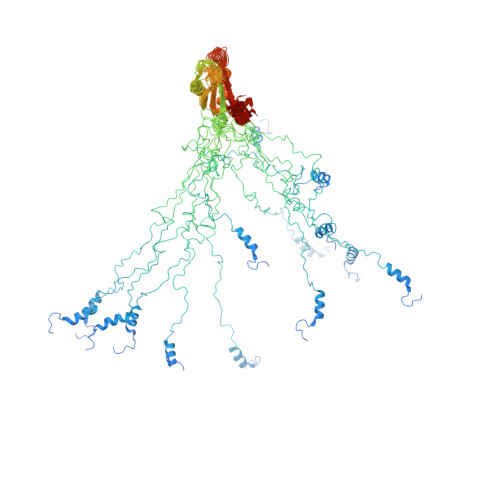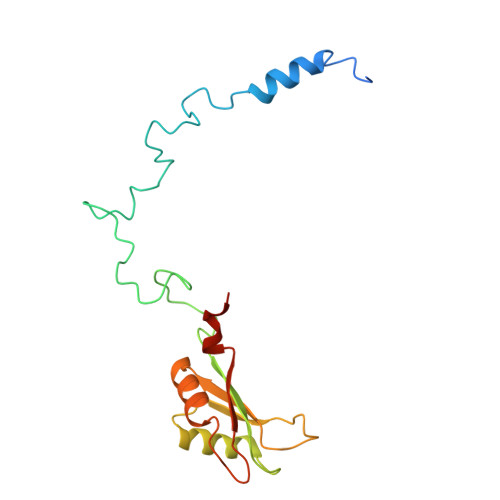The solution structure of REF2-I reveals interdomain interactions and regions involved in binding mRNA export factors and RNA.
Golovanov, A.P., Hautbergue, G.M., Tintaru, A.M., Lian, L.Y., Wilson, S.A.(2006) RNA 12: 1933-1948
- PubMed: 17000901
- DOI: https://doi.org/10.1261/rna.212106
- Primary Citation of Related Structures:
2F3J - PubMed Abstract:
The RNA binding and export factor (REF) family of mRNA export adaptors are found in several nuclear protein complexes including the spliceosome, TREX, and exon junction complexes. They bind RNA, interact with the helicase UAP56/DDX39, and are thought to bridge the interaction between the export factor TAP/NXF1 and mRNA. REF2-I consists of three domains, with the RNA recognition motif (RRM) domain positioned in the middle. Here we dissect the interdomain interactions of REF2-I and present the solution structure of a functionally competent double domain (NM; residues 1-155). The N-terminal domain comprises a transient helix (N-helix) linked to the RRM by a flexible arm that includes an Arg-rich region. The N-helix, which is required for REF2-I function in vivo, overlaps the highly conserved REF-N motif and, together with the adjacent Arg-rich region, interacts transiently with the RRM. RNA interacts with REF2-I through arginine-rich regions in its N- and C-terminal domains, but we show that it also interacts weakly with the RRM. The mode of interaction is unusual for an RRM since it involves loops L1 and L5. NMR signal mapping and biochemical analysis with NM indicate that DDX39 and TAP interact with both the N and RRM domains of REF2-I and show that binding of these proteins and RNA will favor an open conformation for the two domains. The proximity of the RNA, TAP, and DDX39 binding sites on REF2-I suggests their binding may be mutually exclusive, which would lead to successive ligand binding events in the course of mRNA export.
Organizational Affiliation:
Faculty of Life Sciences and Manchester Interdisciplinary Biocentre, The University of Manchester, Manchester M1 7DN, UK. a.golovanov@manchester.ac.uk
















